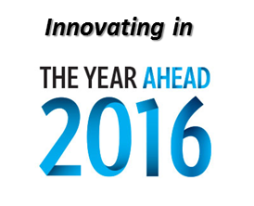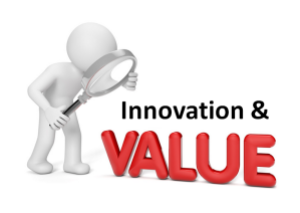
We all are caught up in handling and understanding different management tools.
Bringing my thinking and solutions to your problems

 There was a report written back in 2013 entitled and under, “The New Normal: Competitive advantage in the digital economy” written for the Big Innovation Centre, an initiative of The Work Foundation and Lancaster University that I would recommend your time to read.
There was a report written back in 2013 entitled and under, “The New Normal: Competitive advantage in the digital economy” written for the Big Innovation Centre, an initiative of The Work Foundation and Lancaster University that I would recommend your time to read.
I often go back to this as it provides a real source of understanding of the shifts being undertaken within our organizations, to make the fundamental shifts in their thinking to understand where today’s and our future value creation will come from; something that is mostly due to this increasing importance of the digital changes occurring all around us.
Continue reading “Shifting our dynamics to innovate within the digital age”
 Are we entering 2016 with an innovating mind-set? We need too, so as to seize the growth that is going to be tougher to find.
Are we entering 2016 with an innovating mind-set? We need too, so as to seize the growth that is going to be tougher to find.
As we look to enter into 2016 what is top of mind for innovation to take hold and become the real core within our business organizations?
Some of my quick thoughts or repeating mantras, no apologies here:
• Innovation is not the preserve of the (selected) few but the domain of the community, it is encouraging our connections to actually connect and exchange mutual value and knowledge.
• Moving innovation from just being symbolic to essential. We must stop dipping our toes in the water, we need to just jump in and get wet. We need to get everyone involved and wanting to contribute engaged and excited on where innovation can really take us
Continue reading “Moving innovation even more in 2016”
 Have you ever been caught up in a sudden surge within a crowd, when it all suddenly moves, temporarily sweeping you off your feet.
Have you ever been caught up in a sudden surge within a crowd, when it all suddenly moves, temporarily sweeping you off your feet.
This is making the pulse race a little more until you actually begin to enjoy the sensation?
It brings out a sudden rush of emotions. It can be intense, it moves you in a particular direction, often you are struggling to regain control, and everything around you heightens in your awareness. You love it or you hate it.
Either way it gives a real rush.
Continue reading “That sudden surge within the crowd”
 Is Agility compatible for many working in established businesses?
Is Agility compatible for many working in established businesses?
“To be agile” is often a badge of honor.
It conveys your flexibility, nimbleness and your ability to be adaptive.
Agility is today going far beyond just being responsive,it goes into constantly adjusting and being versatile, modifying to meet rapidly changing conditions.
Yet this often seems the very opposite within many of our organizations and the very people employed within them. They seem rigid, inflexible and determined to stay ‘resolute’ to the established ways and routines built up over years.
They love stability, it is their bedrock but equally, they do need a greater fluidity to their performance and structures as well.
Continue reading “Making Agility Compatible For You”
 We never seem capable of adapting as well as we should do.
We never seem capable of adapting as well as we should do.
Adapting always seems a work-in-progress, or it is often something where we are simply making little or no progress!
We often stay ‘stuck’ in the way we do ‘things’ around here, never seemed able to break out into something new or different.
To adapt we need to open ourselves up to learning and adjusting our organizational ‘form’ in new ways.
In business, there should be a constant battle to reconfigure the assets and extend the existing capabilities. Yet often these stay ‘static’ not learning or improving.
In our innovation activities, there is an even greater pressing need to build into our thinking the ability to find more dynamic capabilities. It is a constant innovator’s dilemma to think through and get right.
What might help? Continue reading “Striving for the innovation balance: between exploring and exploiting.”
 As we come closer to the year-end it’s good to look back, and make some dedicated time to take ‘stock’, in this case, on innovation’s progress.
As we come closer to the year-end it’s good to look back, and make some dedicated time to take ‘stock’, in this case, on innovation’s progress.
In a just-released “The State of Innovation Management in 2015” that I have authored and kindly provided by HYPE for free, I believe you will find something of interest that you missed during a busy year, coming to a close.
I certainly hope you will find time to go through it.
.
http://i.hypeinnovation.com/the-state-of-innovation-2015-report
The Surge of innovation reports in 2015
Continue reading “The State of Innovation Management in 2015 Just Released”
 The days of simply having ideas moving through a pipeline and coming out the other end as finished product and services seems part of our great past.
The days of simply having ideas moving through a pipeline and coming out the other end as finished product and services seems part of our great past.
I believe Innovation is becoming overwhelmed by all the changes we are applying into innovation activity and its management.
I would say the IM system is under even greater strain from the shifts coming from the multiple applications of technology, new approaches to design and modelling as well as all the necessary engagement and touchpoints.
Yet we are still expecting this deluge of change occurring to happily move our innovations through that past established, often manual processes, we have presently in place. I think not. We are deluding ourselves, that all is well.
There are such changes occurring.
Continue reading “Sinking the unthinkable”
 Innovation needs to create value, both short-term and progressively over time. It fuels the growth and fires the imagination.
Innovation needs to create value, both short-term and progressively over time. It fuels the growth and fires the imagination.
Yet our innovation activities are constantly coming up short for the leaders within our organizations, who continue to remain disappointed in its final outcome to stimulate and drive the growth they want to see.
It is actually the classic “chicken and egg”. Aristotle (384–322 BC) was puzzled by the idea that there could be a first bird or egg and concluded that both the bird and egg must have always existed. Leaders need to lead and are they the chicken, they are the resource for how can the people charged with innovation can lay the ‘golden eggs’ needed, if they are incapable of laying? Or should the innovation egg come first for our leaders to become more confident and build further, believing in innovation far more?
There should be no dilemma we can’t treat innovation lightly anymore, it needs to develop its uniqueness for each of our organizations to evolve. We need both the egg and the chicken to be ‘producing’.
What I’m driving towards here is that innovation is evolving is my 1st point
Continue reading “Constructing Innovation as Value Management”
 From my perspective, I’ve been looking at a real challenge today, that many consultants offering innovation services are not providing real sustaining consulting value to clients, only ad-hoc services.
From my perspective, I’ve been looking at a real challenge today, that many consultants offering innovation services are not providing real sustaining consulting value to clients, only ad-hoc services.
Unless this changes it will continue to erode the clients’ confidence in these service providers and they will be seeking increasing internal solutions to tackle their problems. I think if this trend continues it will be a mistaken course.
Consultants are not addressing many of the changes occurring and ignoring opportunities to adapt to different circumstances, they are simply not putting up a strong case of their engagement by redesigning their business models or opening themselves up to different forms of collaboration.
In many ways, the consulting industry specializing in innovation is its own worst enemy.
It is highly fragmented, often highly specialized in certain innovation practices, and much of the advice comes from a cottage industry of independent practitioners, caught up in executing and little time for advancing their own knowledge. Continue reading “The Challenges Being Faced by Innovation Consultants”